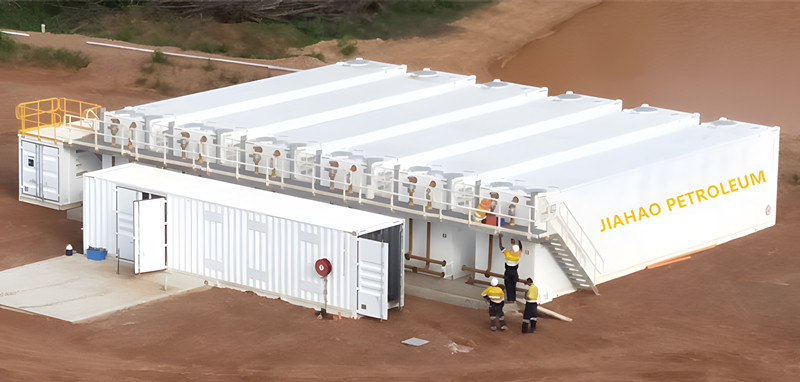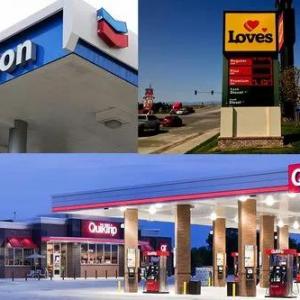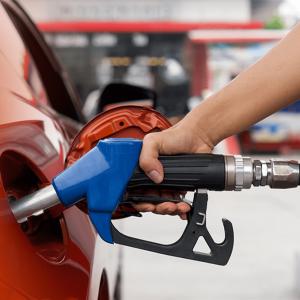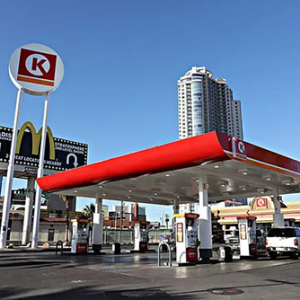How Portable Gas Stations Solve the Remote Supply Problem?
A New Way to Fuel: How Portable Gas Stations Solve the Remote Supply Problem
Introduction: The Last-Mile Challenge in Remote Fueling
In the vast, sprawling landscapes of mining operations, agricultural fields, remote construction sites, and even in the heart of disaster relief efforts, the traditional fixed gas station is often out of reach. Fuel resupply becomes a critical "last-mile" problem that can cripple a company's operations. Statistics show that up to 35% of industrial productivity worldwide is lost due to untimely fuel delivery, while the cost of traditional tanker truck delivery can be 2-3 times higher than that of a fixed station.
However, the emergence of the Portable Gas Station is fundamentally changing this reality. These all-in-one units integrate fuel storage, metering, safety, and mobility, allowing a complete "portable Filling Station" to be deployed directly to the worksite. This article will take a deep dive into how portable gas stations are becoming the optimal solution for remote fuel resupply.
1. What is a Portable Gas Station?
1.1 The Core Components
A modern portable gas station is a highly integrated solution, typically featuring four key modules:
-
Fuel Tank Explosion Proof Mobile: This is the heart of the unit. It's a double-walled stainless steel fuel Container moveable design, ensuring maximum safety and security. With capacities ranging from 1,000 to 20,000 liters, it meets various needs.
-
Smart Fueling System: Equipped with a high-precision Flow meter (with an accuracy of ±0.3%) for reliable measurement, along with an anti-static nozzle to ensure safe operation.
-
Flexible Mobile Chassis: Can be configured as a heavy-duty truck chassis, trailer, or container-based unit, allowing for easy relocation and rapid deployment.
-
Advanced Safety Control System: Includes vapor recovery, emergency shut-off valves, and flame detection features to ensure safe operation in diverse environments.
1.2 A Comparison of Advantages
Compared to traditional fueling methods, portable gas stations offer disruptive advantages in terms of efficiency and cost:
2. Five Key Applications for Portable Gas Stations
2.1 Mining Operations: The Energy Hub of the Uncharted
In a case study at a large coal mine in Inner Mongolia, deploying a portable gas station led to a significant increase in productivity. Haul trucks' average daily working hours rose from 14 to 18 hours, and fuel theft and loss rates dropped from 7% to just 0.3%. A single unit saved the company over ¥800,000 (approx. $110,000 USD) in annual transportation costs, solidifying its role as a vital "energy hub."
2.2 Agricultural Operations: Fueling the Harvester on the Move
Case studies from farmers in the American Midwest show that during harvest season, a portable gas station boosted fuel resupply efficiency by 300%. The time needed for field operation interruptions was reduced to less than 15 minutes. The system also supports switching between multiple fuel types (diesel, gasoline, biofuels), perfectly adapting to the diverse needs of modern agriculture.
2.3 Emergency Relief: The 72-Hour Rapid Response
Experience from earthquake relief efforts in Japan demonstrated the immense value of containerized portable gas stations. They can be deployed within 30 minutes and serve up to 500 vehicles per day. Integrated with satellite communication, they ensure efficient dispatch and service even in remote areas where conventional communication is down.
2.4 Construction: The "Fuel Support Vehicle" of the Job Site
Whether it's a skyscraper in a major city or a road in the countryside, a portable gas station can deliver diesel directly to excavators, bulldozers, and other heavy machinery. This eliminates the inefficiencies and safety risks associated with traditional fueling methods.
2.5 Marine Fisheries: The Onshore Refueling Stop for Vessels
For ports and fishing bases, a portable gas station can serve as an onshore refueling point for vessels. It enables quick fueling, reducing the complex processes of navigating ships to traditional stations and significantly increasing the flexibility of fishing operations.
3. Key Criteria for Choosing a Portable Gas Station
3.1 Safety: A Robust Certification System
Safety is the primary consideration when selecting a portable gas station. A high-quality unit, such as a portable Filling Station, should be certified by multiple authorities, including:
-
ATEX 94/9/EC Certification (European Union)
-
UL Standards (United States)
-
GB 50156-2021 (China's Design Specification for Gas Stations)
3.2 Intelligence: The Foundation of Efficient Management
The latest generation of portable gas stations features smart technologies that enhance management efficiency:
-
IoT Fuel Level Monitoring (accuracy ±1%)
-
Facial Recognition or RFID Card fueling systems
-
Electronic Fencing for anti-theft security
-
Remote Emergency Shut-off devices
3.3 Adaptability: Custom Configuration for Harsh Environments
-
Extreme Cold: Equipped with a fuel heating system to ensure normal operation down to -40°C.
-
Dusty Environments: Features a three-stage air filtration system to protect core components.
-
High Corrosion Scenarios: Made with 316L stainless steel to extend the unit's lifespan.
4. A Success Story: A Wind Power Project in Xinjiang, China
A state-owned enterprise was building 80 wind turbines in Xinjiang's notoriously windy region. They faced immense fuel resupply challenges: the nearest gas station was 180 km away, the area experienced over 200 days of gale-force winds annually, and the project required over 2 million liters of diesel per year.
The Solution:
-
They deployed three containerized portable gas stations, each equipped with an anti-wind anchoring system and remote monitoring.
-
They adopted a scheduled fueling model to ensure precise delivery.
The Results:
-
Project construction time was reduced by 60 days.
-
Fuel costs dropped by 42%.
-
The project achieved uninterrupted fuel supply year-round.
5. The Future Trends of Portable Gas Stations
-
New Energy Integration: In 2023, Germany launched an integrated "solar-storage-fuel" mobile station, where solar panels generate enough electricity to meet 20% of the unit's energy consumption.
-
Digital Twin Technology: Singapore is testing a virtual gas station system that uses AR glasses to provide remote maintenance guidance, drastically reducing operational costs.
-
Modular Development: A new Swiss-designed unit uses a "Lego-style" modular design, allowing operators to flexibly combine a Fuel Tank Explosion Proof Mobile with EV charging stations or hydrogen modules, laying the groundwork for a future of diverse energy supply.
Conclusion: The Era of Mobile Energy Has Arrived
The Portable Gas Station is not just an emergency option for remote areas; it is a foundational component for restructuring our future energy network. For businesses with scattered operations and fluctuating fuel demands, strategically deploying a mobile fueling system will provide significant operational and cost advantages. We recommend that companies start with a pilot program, partner with a certified equipment supplier, and gradually build a resilient and flexible mobile fueling network.







